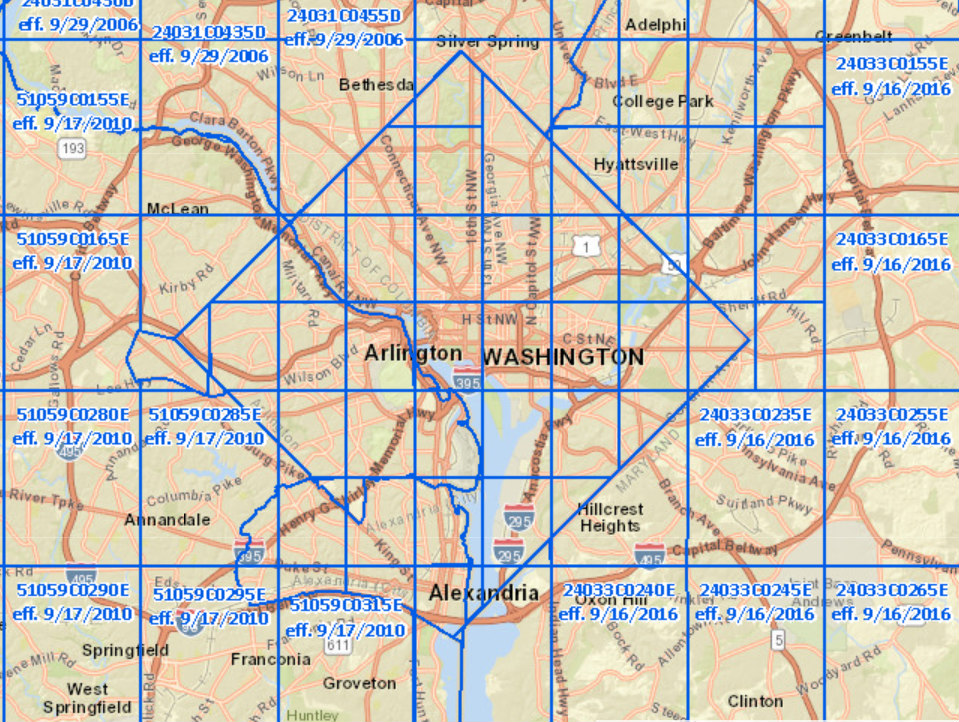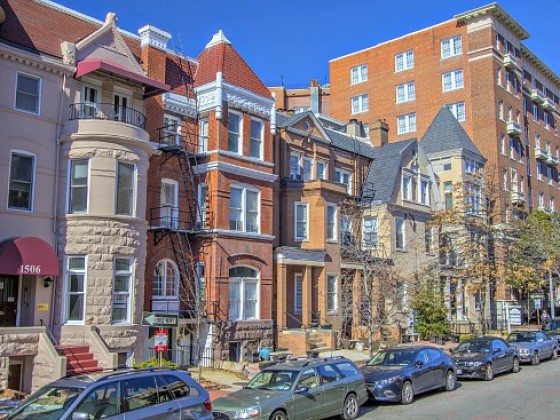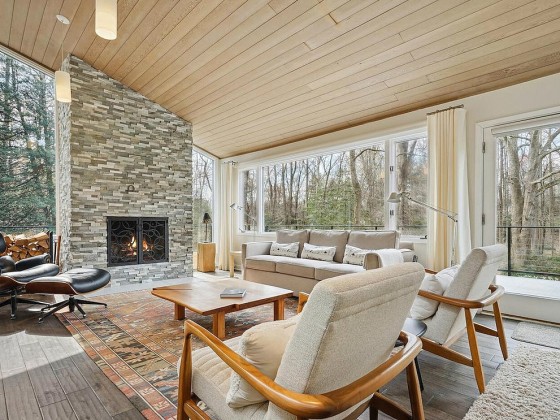What's Hot: 142-Unit Development At Inn of Rosslyn Site Moves Forward | Mortgage Rates Inch Closer To 7%
 A Guide to Flood Insurance in the DC Area
A Guide to Flood Insurance in the DC Area
✉️ Want to forward this article? Click here.
This article originally ran on UrbanTurf in May 2018.
The District's location along two rivers and their confluence practically makes flooding a certainty. Given that, UrbanTurf explains in this article how DC-area residents can go about securing flood insurance.
Most homeowners' and renters' insurance policies do not cover flooding. The largest flood insurance policy provider is the federal government, via the National Flood Insurance Program (NFIP), and insurance companies are middle-men for NFIP policies. This is the case in DC and throughout most of Maryland and Virginia.
story continues below
loading...story continues above

The NFIP calculates your flood insurance premium based on a variety of factors, the most important being a property's proximity to the floodplain. Premiums are standardized across providers and are determined by Federal Emergency Management Agency's (FEMA) Flood Insurance Rate Map.
Properties in high-risk flood areas, within the 100-year floodplain, require flood insurance of all mortgagees; in areas of low-to-moderate risk, or if a mortgage doesn't apply, such insurance is optional. Those who purchase insurance in optional zones can secure Preferred Risk Policies with lower premiums.
One can purchase a General Property Policy, which can cover five or more residential or non-residential buildings; a Residential Condominium Building Association Policy, which covers condos and townhouses; or a Standard Flood Insurance Policy, which is most commonly utilized and covers up to four individual units in multi-family buildings and single-family homes. The latter category offers either building property coverage of up to $250,000 or personal property coverage of up to $100,000; one can also purchase both.
Personal property policies can carry premiums as low as $60; one can opt to cover either the replacement cost of belongings or the actual cost of belongings factoring in depreciation. On average, annual premiums for plans with building coverage tend to be in the $400-$500 range. Contact your preferred insurance provider for a quote — and be sure to look up whether your home is in a high-risk area.
See other articles related to: flood insurance in dc, flood risk, flood zone, flooding, flooding in dc, floodplain
This article originally published at https://dc.urbanturf.com/articles/blog/a-guide-to-flood-insurance-in-the-dc-area/18658.
Most Popular... This Week • Last 30 Days • Ever

Buffett called the five-bedroom listing home when his father, Howard Buffett, was ser... read »

Estate taxes, also known as inheritance taxes or death duties, are taxes imposed on t... read »

The application may signal movement on the massive mixed-use project.... read »

Penzance has unveiled its striking new plans for Rosslyn.... read »

A new report finds that the current housing market is split into two groups.... read »
- The Oracle of Spring Valley: Warren Buffett's Childhood Home in DC Hits the Market
- What Are Estate Taxes and How Do They Work?
- Raze Application Filed For Site Of 900-Unit Development, Food Hall Along Anacostia River
- Three Buildings, 862 Units: The New Plans For Rosslyn's Skyline
- The Two Housing Markets
DC Real Estate Guides
Short guides to navigating the DC-area real estate market
We've collected all our helpful guides for buying, selling and renting in and around Washington, DC in one place. Start browsing below!
First-Timer Primers
Intro guides for first-time home buyers
Unique Spaces
Awesome and unusual real estate from across the DC Metro













